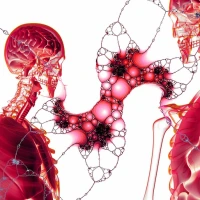Who is Poseidon The Greek God? Fun Facts & Mythology About Poseidon the God of the Seas and Storms
Poseidon is a prominent god in Greek mythology, often associated with the sea, earthquakes, and horses. As an important figure in ancient Greek religion, Poseidon has left an indelible mark on Western culture. Poseidon is often depicted as a powerful and imposing figure, wielding a trident and riding on the backs of horses. He is the god of the sea and all its creatures, and is said to have the power to create and control waves, storms, and earthquakes. In mythology, Poseidon is also known for his temperamental nature and his penchant for punishing those who displease him. In addition to Poseidon, the beautiful Aphrodite and wise Athena are among the twelve most important Olympian deities who reside on Mount Olympus, alongside Greek Gods such as Hermes and Apollo.

Image credit: Sergey Torbik
Poseidon: God of the Sea, Storms, Earthquakes, and Horses
Poseidon was revered by sailors and fishermen who prayed to him for protection and a safe journey at sea, as he was believed to have the power to create and control waves, storms, and earthquakes. In addition to his association with the sea, Poseidon was also associated with horses and was often worshipped by equestrians and horse breeders. Poseidon’s legacy can be seen in the many cultural references to him in literature, art, and popular culture, and he continues to be a source of inspiration for writers and artists around the world. Despite his tempestuous nature, Poseidon remains one of the most enduring figures in Greek mythology and his influence can be seen in the modern world.
Myths and the Origins of Poseidon: Birth Story
Poseidon is a prominent god in Greek mythology, known for his association with the sea, earthquakes, and horses. His birth and origin story are deeply ingrained in ancient Greek mythology and offer insight into the beliefs and values of the time.
According to legend, Poseidon was born to the Titans Cronus and Rhea. Cronus was known for his fear of being overthrown by his own children, so he swallowed them whole as soon as they were born. However, Rhea managed to hide Poseidon and his siblings from Cronus. She gave birth to Poseidon in a secret cave on the island of Crete, and he was raised there in secret by a foster mother.

When Poseidon grew up, he joined forces with his siblings to overthrow Cronus and the other Titans. The resulting conflict, known as the Titanomachy, lasted for ten years and ended with the victory of the Olympians, led by Zeus, Poseidon’s brother.
After the Titanomachy, the three brothers drew lots to divide up the universe. Zeus was given the sky, Hades was given the underworld, and Poseidon was given the sea. This marked the beginning of Poseidon’s reign as the god of the sea, a position that would make him one of the most powerful and influential figures in Greek mythology.
The story of Poseidon’s birth and rise to power reflects the complex and often turbulent nature of Greek mythology. It emphasizes the importance of family, the power of prophecy, and the constant struggle between gods and mortals. It also underscores the role of fate and destiny in shaping the lives of the gods and their worshippers.
Today, the story of Poseidon’s birth and rise to power continues to inspire and captivate people around the world. From epic poems to modern works of fiction and art, Poseidon remains a source of inspiration for writers, artists, and anyone who seeks to understand the enduring power of ancient mythology.
Myths and Stories About Poseidon

Poseidon and his Lovers
Poseidon was one of the most powerful and influential gods in ancient Greek mythology, known for his association with the sea, earthquakes, and horses. Like many other gods, Poseidon was often depicted as a lover of mortals and other deities. In this essay, we will explore the various lovers of Poseidon and their significance in Greek mythology.
One of Poseidon’s most famous lovers was Amphitrite, the goddess of the sea. According to legend, Poseidon first laid eyes on Amphitrite while riding on the back of a dolphin. He was instantly smitten by her beauty and tried to win her over with various gifts and promises. Eventually, Amphitrite agreed to become Poseidon’s queen and they ruled over the sea together.
Another famous lover of Poseidon was Demeter, the goddess of agriculture and fertility. According to legend, Poseidon fell in love with Demeter while she was tending to her crops. However, Demeter was not interested in Poseidon’s advances and rejected him. Undeterred, Poseidon transformed himself into a horse and seduced Demeter, resulting in the birth of a daughter named Despoina.
Poseidon was also known for his relationships with mortal women. One of his most famous mortal lovers was Medusa, a beautiful woman who was transformed into a monster with snakes for hair by the goddess Athena. According to some legends, Poseidon and Medusa had a passionate affair that resulted in the birth of Pegasus, the winged horse.
The various lovers of Poseidon reflect the complex and often tempestuous nature of Greek mythology. They represent the power of love and desire, as well as the consequences that come with pursuing forbidden passions. They also highlight the often blurred lines between gods and mortals, and the ways in which the actions of the gods can impact the lives of mortals.
Today, the stories of Poseidon’s lovers continue to be a source of inspiration for writers, artists, and anyone interested in the enduring power of Greek mythology. They offer a glimpse into the complex and often contradictory nature of human relationships, and the ways in which they can shape the world around us.

The Love Story of Poseidon and Scylla
Poseidon, the Greek god of the sea, was known for his numerous love affairs with both mortals and deities. While he had many lovers, he was particularly fond of a woman named Scylla, a sea nymph who lived on the coast of Sicily. In this essay, we will explore the story of Poseidon and Scylla’s relationship and its significance in Greek mythology.
According to legend, Poseidon was smitten with Scylla’s beauty and often visited her on the shores of Sicily. He would bring her gifts and shower her with affection, hoping to win her heart. However, Scylla was not interested in Poseidon’s advances and rejected him. Enraged by her rejection, Poseidon decided to punish Scylla by transforming her into a monster with six heads and twelve tentacle-like legs.
The story of Poseidon and Scylla’s relationship reflects the complex and often tumultuous nature of love in Greek mythology. It highlights the power of desire and the consequences that can come with rejecting the advances of a god. It also underscores the themes of betrayal and transformation, as Scylla’s rejection of Poseidon ultimately leads to her own transformation.
Despite the tragic end to their relationship, Poseidon’s love for Scylla remained strong. In some versions of the story, he continued to visit her and offer her gifts, even after she had been transformed into a monster. This suggests that, for Poseidon, his love for Scylla transcended her physical appearance and was rooted in something deeper.
Today, the story of Poseidon and Scylla remains a popular subject in literature, art, and popular culture. It continues to inspire writers and artists who are interested in exploring the complexities of love, desire, and transformation. It also offers a fascinating glimpse into the world of Greek mythology and the enduring power of its stories and themes.
Myths About Poseidon and Medusa
In Greek mythology, Poseidon, the god of the sea, is known for his many love affairs with mortals and deities. One of his most famous lovers was Medusa, a beautiful woman who was transformed into a monster with snakes for hair by the goddess Athena. In this essay, we will explore the story of Poseidon and Medusa’s relationship and its significance in Greek mythology.
According to legend, Poseidon was initially drawn to Medusa’s beauty and approached her with amorous intentions. However, their relationship quickly turned sour when they were caught in Athena’s temple, engaging in a sexual act. Furious at their desecration of her sacred space, Athena cursed Medusa, turning her into a Gorgon with snakes for hair and the ability to turn people to stone with a single glance.
The story of Poseidon and Medusa’s relationship highlights the theme of betrayal in Greek mythology. It underscores the danger of defying the gods and the consequences that can come from doing so. It also reflects the complex and often tempestuous nature of human relationships, and the ways in which love and desire can lead to tragedy.
Despite their rocky start, Poseidon’s love for Medusa persisted. In some versions of the story, he continued to visit her and offer her gifts, even after she had been transformed into a monster. This suggests that, for Poseidon, his love for Medusa transcended her physical appearance and was rooted in something deeper.
Today, the story of Poseidon and Medusa remains a popular subject in literature, art, and popular culture. It has inspired countless writers and artists who are interested in exploring the themes of betrayal, transformation, and the power of love. It also offers a fascinating glimpse into the world of Greek mythology and the enduring power of its stories and characters.
Poseidon and His Good Deeds
Poseidon, the Greek god of the sea, is often portrayed as a moody and unpredictable deity, prone to fits of anger and violence. However, there are also many stories in which Poseidon is depicted performing good deeds and acts of kindness.
One of the most famous tales of Poseidon’s benevolence is the story of Theseus and the Minotaur. According to legend, Theseus was a young prince who was sent to Crete to be sacrificed to the monstrous Minotaur, a creature with the body of a man and the head of a bull. Poseidon took pity on Theseus and gave him a magical sword that would allow him to defeat the beast. With Poseidon’s help, Theseus was able to slay the Minotaur and return home safely.
Another story of Poseidon’s kindness involves the Trojan hero Aeneas. According to legend, Aeneas was shipwrecked on the coast of Africa and was in danger of being killed by the local inhabitants. Poseidon took pity on Aeneas and convinced the sea nymphs to help him. With their assistance, Aeneas was able to escape and continue his journey.
In addition to these individual acts of kindness, Poseidon was also seen as a powerful protector of sailors and fishermen. He was often invoked by those who were setting out to sea, and was believed to watch over them and keep them safe from harm.
Poseidon was also associated with healing and the preservation of life. In some myths, he was said to have created springs and other sources of fresh water, which were essential for life in ancient Greece. He was also believed to have the power to heal the sick and wounded, and was often invoked by those in need of healing.
Despite his reputation for anger and violence, Poseidon’s acts of kindness and benevolence show that he was a complex and multifaceted deity. His association with the sea and the forces of nature made him both a fearsome and a powerful figure, capable of great destruction and great mercy. Today, Poseidon continues to be a popular figure in popular culture, appearing in movies, books, and other forms of media.

Facts About Poseidon
- Poseidon was one of the twelve Olympian gods in Greek mythology.
- He was the god of the sea, earthquakes, and horses.
- His weapon of choice was a trident, which he used to create storms, earthquakes, and tidal waves.
- Poseidon was the brother of Zeus and Hades, and was one of the most powerful gods in Greek mythology.
- He was often depicted riding a chariot pulled by sea horses or dolphins.
- Poseidon was married to Amphitrite, a sea goddess, and they had many children together.
- He was also known for his many love affairs with both mortals and deities.
- Some of Poseidon’s most famous lovers included Medusa and Scylla.
- Poseidon was often depicted as a moody and temperamental god, prone to fits of anger and jealousy.
- He was also considered a protector of sailors and was often worshipped by those who relied on the sea for their livelihoods.
- Poseidon was worshipped in many ancient Greek cities, including Athens, Corinth, and Sparta.
- In Roman mythology, Poseidon was known as Neptune.
- The ancient Greeks believed that Poseidon’s anger could cause earthquakes and other natural disasters.
- According to legend, Poseidon created the island of Atlantis as a gift for his lover, Cleito.
- Poseidon was sometimes associated with horses and was said to have created the first horse by striking a rock with his trident.
Powers of Poseidon:
- Control over the sea and its creatures
- Ability to cause and calm storms, hurricanes, and tidal waves
- Control over earthquakes and volcanic eruptions
- Ability to create and control freshwater sources, such as springs and rivers
- Mastery over horses and chariots
- Ability to create new islands and destroy existing ones
- Control over marine weather and currents
- Ability to change his physical form and appearance
- Power to create and control sea monsters
- Control over the tides and oceanic phenomena
- Ability to communicate with sea creatures and control their actions
- Power to grant or withhold calm seas and favorable winds to sailors
- Control over underwater caverns and passageways

Relationships of Poseidon:
- Brother of Zeus and Hades
- Son of Cronus and Rhea
- Husband of Amphitrite, a sea goddess, and father of many children with her
- Had many love affairs with both mortals and deities, including Demeter, Medusa, and Scylla
- Was attracted to various nymphs, such as Thetis and Persephone
- Fathered many legendary creatures, such as the winged horse Pegasus and the giant Polyphemus
- Had a contentious relationship with Athena, who cursed his lover Medusa and turned her into a monster
- Associated with various sea creatures, including dolphins, sea serpents, and hippocampi
- Was worshipped by many ancient Greeks as a god of the sea and protector of sailors
- Had both loyal followers and enemies among the other Greek gods and goddesses, such as Hera and Apollo.
Symbols of Poseidon
- Trident, his signature weapon
- Chariot pulled by horses or sea creatures
- Dolphins, which were associated with him and often depicted accompanying him
- Horses, which he was often depicted riding or controlling
- Shells and other marine elements, which were associated with his domain over the sea
- Sea monsters, such as krakens and sea serpents, which he was said to have created or controlled
- Earthquakes and other natural disasters, which were attributed to his anger or displeasure
- Coral and other underwater flora, which were associated with his domain over the sea
- Waterfalls, which were said to be created by his trident
- Seashells and other objects that were believed to be sacred to him.

Read more about the Greek Gods including Athena, Apollo, Poseidon, Aphrodite, and Hermes by checking out these popular articles: the Greek God Hermes, the Greek Goddess Athena, Greek God Poseidon, Greek Goddess Aphrodite, and the Greek God Apollo! Apollo’s love for Daphne remained strong and enduring, and it became one of the most famous love stories in Greek mythology.
| Name | Domain | Symbol |
|---|---|---|
| Zeus | Sky and thunder | Thunderbolt and eagle |
| Poseidon | Sea and earthquakes | Trident |
| Hades | Underworld | Helm of invisibility |
| Athena | Wisdom and warfare | Owl and olive tree |
| Apollo | Music, poetry, and prophecy | Lyre, bow and arrow |
| Artemis | Hunting and virginity | Bow and arrow |
| Ares | War | Spear and shield |
| Aphrodite | Love and beauty | Mirror and dove |
| Hephaestus | Fire and metalworking | Anvil and hammer |
| Hermes | Messengers and travel | Caduceus and winged sandals |
| Dionysus | Wine and fertility | Grapevine and thyrsus |
| Demeter | Agriculture and fertility | Cornucopia and wheat |
Do you like Aphrodite?
Yes:No:
Check out these popular articles 🙂
Circulatory System: Blood Flow Pathway Through the Heart
Ectoderm vs Endoderm vs Mesoderm
Circulatory System: Heart Structures and Functions
Ductus Arteriosus Vs Ductus Venosus Vs Foramen Ovale: Fetal Heart Circulation
Cardiac Arrhythmias: Definition, Types, Symptoms, and Prevention
Upper Vs Lower Respiratory System: Upper vs Lower Respiratory Tract Infections
Seven General Functions of the Respiratory System
Digestive System Anatomy: Diagram, Organs, Structures, and Functions
Kidney Embryology & Development: Easy Lesson
Autocrine vs Paracrine vs Endocrine: What are the Differences?
Their Eyes Were Watching God: Mule Symbol
Shoulder Abduction Muscles: Medical Anatomy and USMLE
Cell Membrane Dynamics: Flippase vs Floppase vs Scramblase
Cell Membrane Fluidity: Factors That Influence and Increase the Cell Membrane Fluidity
Psychology 101: Crowd Psychology and The Theory of Gustave Le Bon
Introduction to Evolution: Charles Darwin and Alfred Russel Wallace
An Overview of Shorthand: History and Types of Shorthand
Calculus: Two Important Theorems – The Squeeze Theorem and Intermediate Value Theorem
Copyright © 2023 Moosmosis Organization: All Rights Reserved
All rights reserved. This essay first published on moosmosis.org or any portion thereof may not be reproduced or used in any manner whatsoever
without the express written permission of the publisher at moosmosis.org.

Please Like, Share, and Subscribe to our Email List at moosmosis.org, Facebook, Twitter, Youtube to support our open-access youth education initiatives! 🙂
Categories: Creative Writing, education, History, Literature













Excellent article and fun facts on Poseidon.
LikeLiked by 2 people
Thank you so much Prof. Stevenson!
LikeLiked by 1 person
You’re very welcome.
LikeLiked by 1 person
Mythology! Among my favorite classes
LikeLiked by 2 people
Among my favorites too, Dr. Keys!
LikeLiked by 1 person